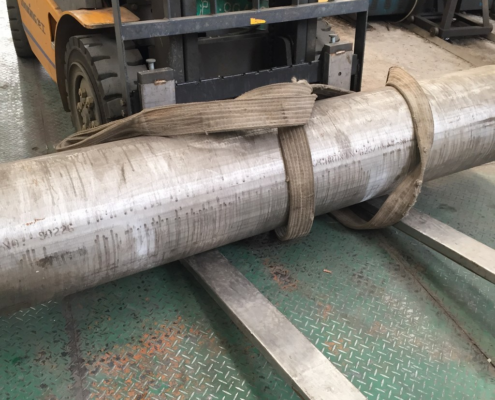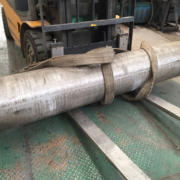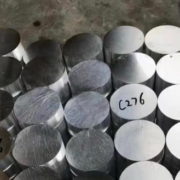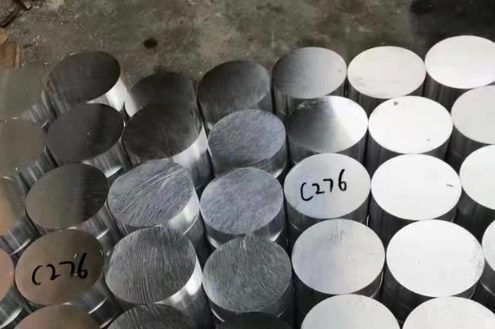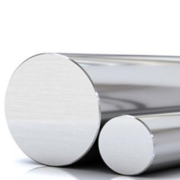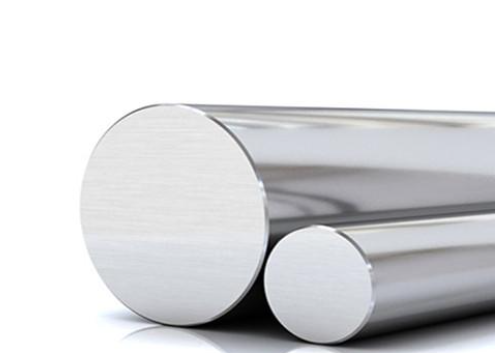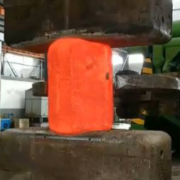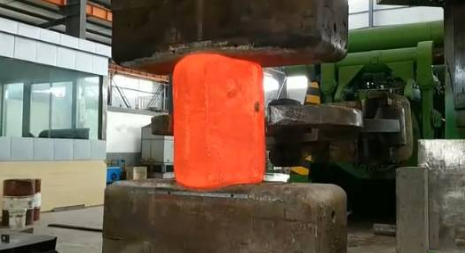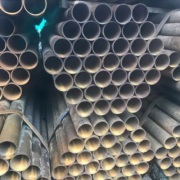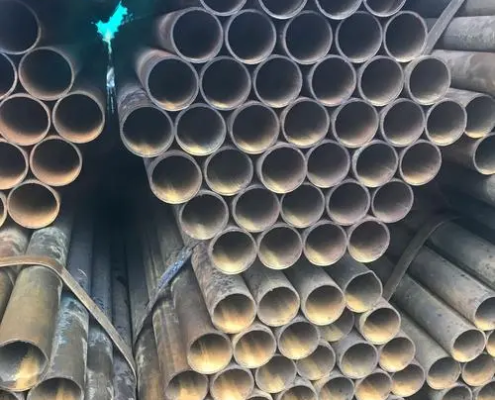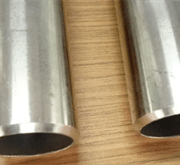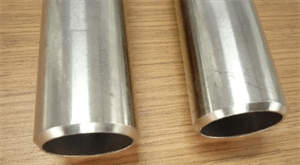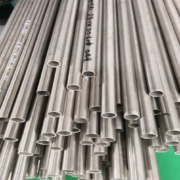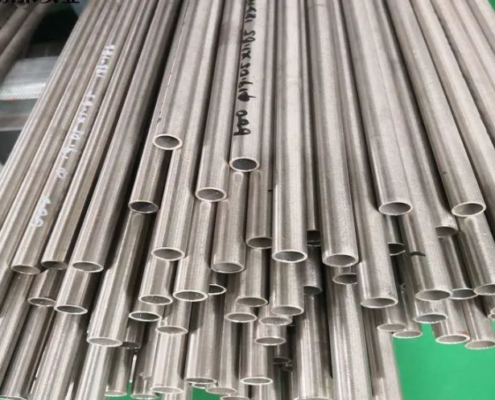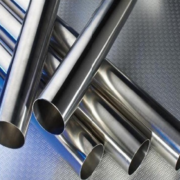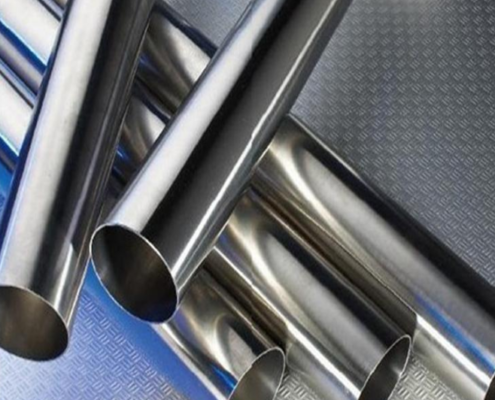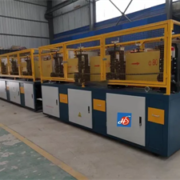Steel bar heat treatment furnace is non-standard induction heating equipment, mainly for steel bar quenching, tempering, and other tempering heat treatment and professional design and manufacture, can meet the various specifications of round steel, steel bar, bar, and long shaft type of metal heat treatment, replacing the old well furnace, bogie furnace, box type resistance furnace, and other heat treatment furnace, but also the mainstream of the current bar tempering heating equipment. Haisan electromechanical Xiaobian to introduce this steel bar heat treatment furnace.
A, steel bar heat treatment furnace main parameters:
1, steel bar heat treatment furnace steel bar material for 35, 35CrMo, 40, 40CrMo, 42CrMo, 45, etc.
2, steel bar heat treatment furnace heating steel bar diameter: 20 ~ 250 mm; length: 2 ~ 12m
3、Steel bar heat treatment furnace heating power: 100-8000Kw
4、Steel bar heat treatment furnace heating efficiency: 0.5t / h — 30t / h
5、Steel bar heat treatment furnace with infrared temperature measurement, automatic control
Second, the control power of the steel bar heat treatment furnace:
1, It controls the power transformer using an isolation transformer way. The Power supply part of the overall use of 12 pulse control mode, the inverter part can be customized according to the customer. Customers can provide their own power output power, frequency but must meet the relevant technical requirements. The control panel is equipped with an internal exhaust system to ensure the temperature inside the control cabinet. The power supply cabinet shall be placed in the electrical room.
2, whether in cold or hot material conditions, the power supply start success rate is higher.
3、Steel rod heat treatment furnace according to the temperature and load changes, power in the rated value of 10-100% range of smooth continuous automatic adjustment, and has a manual adjustment function.
4、It power supply cabinet with all components arranged reasonably, with the corresponding label, the label is fixed in a way to facilitate later maintenance.
5、It has protection and water leakage alarm functions of phase loss, over current, over-voltage, inverter failure, water pressure, and water temperature. When there is any failure in the circuit, the steel bar quenching furnace can quickly protect and disconnect the power supply to prevent component damage.
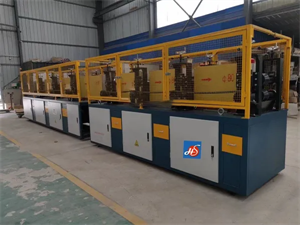
Third, the process of steel bar heat treatment furnace:
Storage mechanism → roller conveyor system → induction heating system → quenching and cooling system → tempering and holding system → infrared temperature measurement system → roller output system → receiving mechanism
Fourth, the various protection of steel bar heat treatment furnace:
1, It is equipped with a temperature control instrument, a water control instrument, can automatically temperature adjust, automatic water replenishment, can be set according to user needs water supply temperature, and return water temperature automatically adjusted. Water supply temperature exceeds the set temperature, automatic shutdown, if the return water temperature is lower than the set temperature, automatic start.
2、It is equipped with LCD digital display, which can accurately and intuitively display the water supply temperature and return water temperature; the water level in the furnace can be displayed on the water level meter, so the operator can clearly grasp the boiler operation.
3, It water control and sensing temperature regulation alarm can be transferred to the automatic protection system, failure, the corresponding indicator light flashes, and automatic shutdown.
Five, steel bar heat treatment furnace design ideas:
1, It design of the furnace before and between the furnace roller conveyor: 304 non-magnetic stainless steel manufacturing, oblique and through the water cooling, greatly extending the service life of the roller conveyor.
2, It design of the spray system: the use of a multi-stage stainless steel water spray ring, and the level of independent adjustment of the pressure and flow of the water spray ring to meet the requirements of different hardenability.
3、The control system designed for it adopts PLC automatic intelligent control system with high production efficiency.
4、It uses the United States Raytek two-color pyrometer for temperature detection real-time display of the workpiece temperature, and uniform heating.
Six, the characteristics of the steel bar heat treatment furnace:
1、It is controlled by the medium frequency power supply, fully digital, high power
2, It heating speed, oxidation decarburization less.
3, It is carefully designed, has a high degree of automation, and can achieve fully automatic operation selection of automatic feeding and automatic discharge sub-inspection device, coupled with pLc control system, can achieve fully automatic operation.
4、It heating uniformity, temperature control precision is high easy to achieve uniform heating, the core table temperature difference is a small requirement. The temperature control system can realize the precise control of temperature.
5、It adopts a frequency conversion motor, each axis motor reducer drive, independent frequency converter control, and sectional control of running speed, making the billet uniform speed, uniform heating, and quenching uniformity.
6、The induction furnace body is easy to replace according to the size of the workpiece, configured with different specifications of the induction furnace body. Each furnace body is designed with water, and electricity quick-change connectors, so that the furnace body is easy to replace, fast, and convenient, in 5 minutes you can replace the furnace body.
7、It adopts an American Raytek temperature measuring instrument to control the temperature of the steel bar, real-time display.
8、Steel bar heat treatment furnace low energy consumption, no pollution. Induction heating compared with other heating methods, has high heating efficiency, low energy consumption, and no pollution, all indicators can reach to meet the requirements. Please enter your phone number
9、Steel bar heat treatment furnace after the tempering heat treatment of the steel bar plasticity, toughness, without straightening, to meet the national standards.
10、Steel bar heat treatment furnace adopts PLC automatic intelligent control system, “one key to start” the whole set of equipment automatic operation, saving labor and cost.
